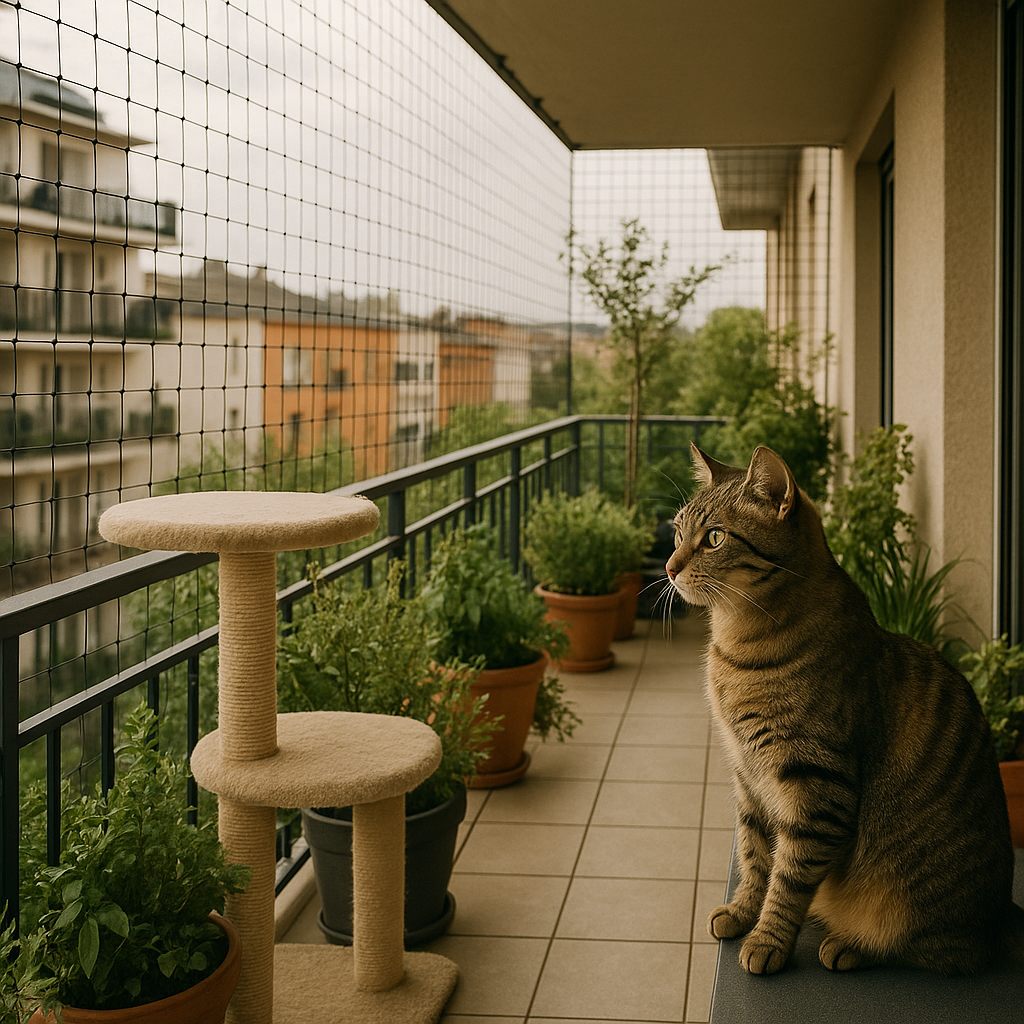How to Prevent Losing Your Cat in an Apartment?
By Lost'Him Team • February 21, 2025

Living in an apartment with a cat may seem secure, but the risk of escape or accidental loss is always present. A cat can slip through an open door, jump from a window, or get lost on a balcony. Fortunately, several precautions can be taken to prevent them from going missing and to ensure their safety. Here’s how to prevent your cat from getting lost in an apartment.
1. Secure Openings
👉 Protect doors, windows, and balconies
- Install safety nets on windows and balconies to prevent falls or jumps.
- Avoid tilt-and-turn windows, as they can trap a cat and cause severe injuries.
- Check door security: Ensure the entrance door is never left ajar, especially when guests enter or exit.
💡 A cat does not always understand the dangers of heights or open spaces. Prevention is key!
2. Train Your Cat Not to Rush Outside
👉 Teach them that the outside is off-limits
- Never let them go outside, even once, to prevent them from developing a habit.
- Discourage running toward the door by teaching them to stay calm when it opens.
- Provide indoor enrichment (cat trees, toys, tunnels, scratching posts) to keep them entertained and reduce curiosity about the outdoors.
💡 A cat that is not bored indoors will be less tempted to explore outside.
3. Meet Their Needs to Avoid Frustration
👉 Create a rich and stimulating environment
- Offer observation spots near windows so they can watch outside safely.
- Play with them daily to help them burn energy and reduce their desire to explore beyond the apartment.
- Provide hiding spots and scratching posts to allow them to express their natural instincts.
💡 An active and mentally stimulated cat will have less interest in escaping.
4. Ensure Identification for Easy Recovery
👉 Make it easier to find them if they get lost
- Microchip your cat: In many countries, identification is mandatory and helps locate a lost cat.
- Use a breakaway collar with an ID tag: Having a tag with your contact number helps someone return them quickly.
- Use a GPS tracker: Some devices allow real-time tracking in case of escape.
💡 A properly identified cat has a much higher chance of being found quickly.
5. Get Your Cat Used to a Carrier
👉 Make the carrier a familiar and safe place
- Leave the carrier open in the apartment with blankets and treats so it doesn’t become a source of fear.
- Practice short sessions by placing them inside for a few minutes, then releasing them with a reward.
💡 A cat that doesn’t panic in their carrier is easier to manage in case of emergency.
6. Be Extra Cautious During Critical Moments
👉 Watch for situations where escape is more likely
- When having guests over: Inform visitors not to leave the door open.
- During a move: A stressed cat might try to flee. Keep them in a secure room until they get used to the new space.
- After sudden loud noises: Fireworks or construction sounds can cause panic and a desperate escape attempt.
💡 Anticipating these situations helps prevent accidents.
Conclusion: Safety and Vigilance for a Secure Cat
- ✅ Secure windows, balconies, and doors to prevent accidental escapes.
- ✅ Train your cat not to approach exits and avoid temptation.
- ✅ Meet their physical and mental needs to prevent boredom and frustration.
- ✅ Ensure proper identification with a microchip and collar for quick recovery.
- ✅ Familiarize them with a carrier for stress-free transportation when needed.
- ✅ Be cautious during high-risk moments when escapes are more likely.
💡 By implementing these precautions, your cat will be safer, more secure, and less likely to escape! 🐱🏡
 EN
EN  FR
FR